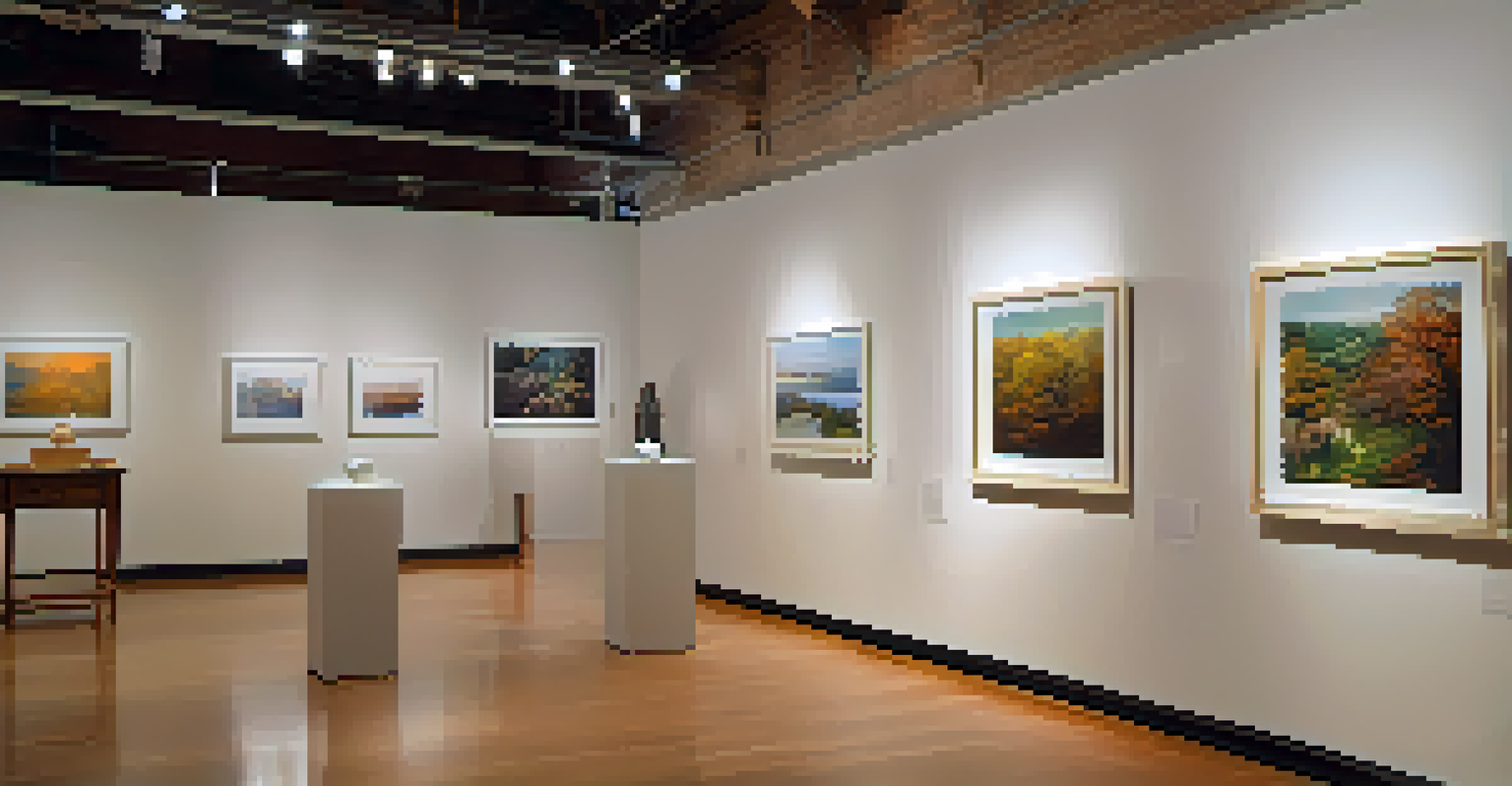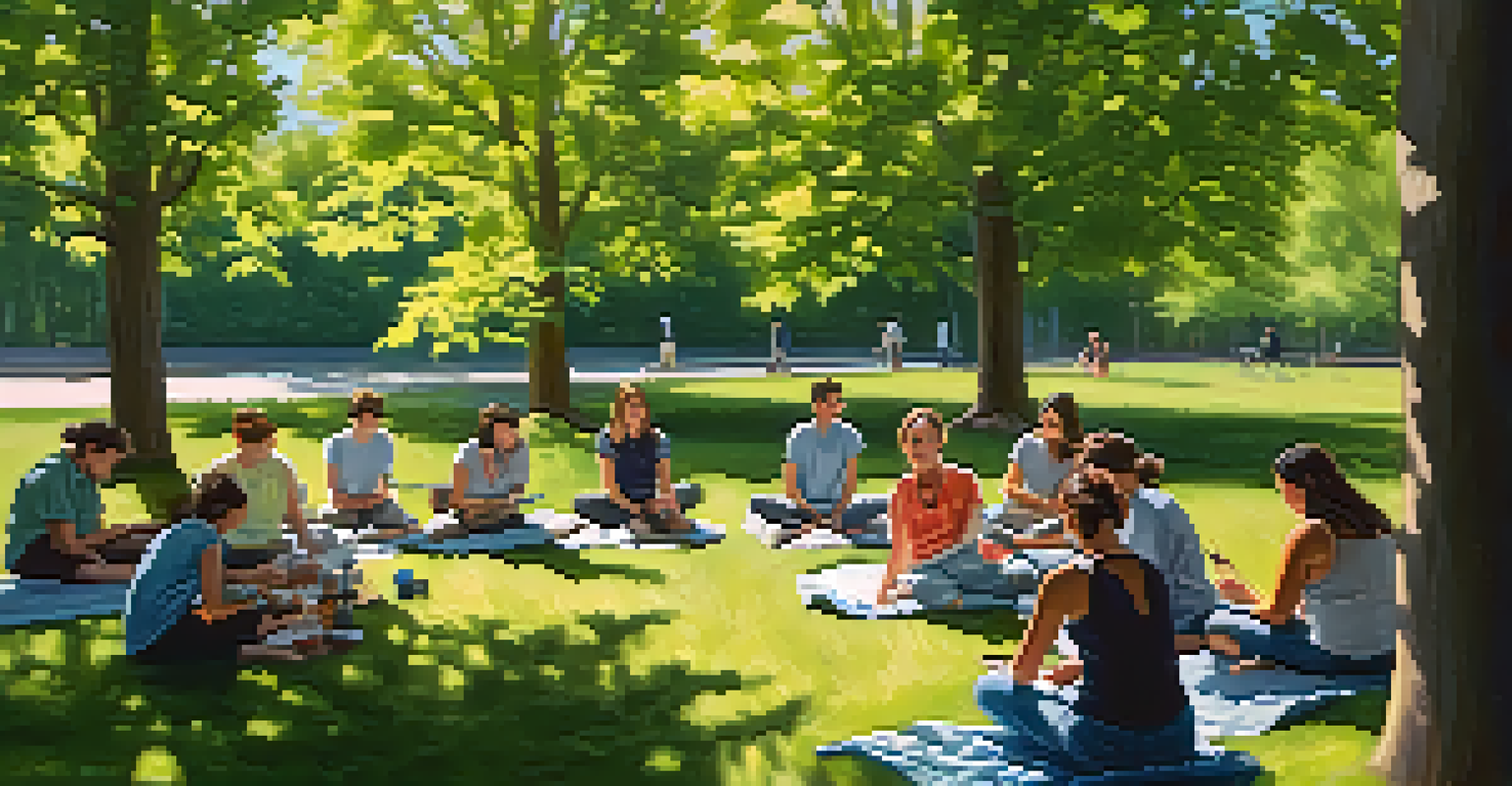How Boston's Art Schools Shape the Future of Creativity

A Rich History of Artistic Innovation in Boston
Boston has long been a beacon for creative minds, with its art scene rooted in rich history. Schools like the Massachusetts College of Art and Design and Boston University have been at the forefront of this artistic evolution. These institutions not only educate budding artists but also preserve a legacy of innovation that inspires future generations.
Art is not freedom from discipline, but disciplined freedom.
The city’s diverse cultural landscape serves as a living classroom, allowing students to draw inspiration from its museums, galleries, and street art. This blend of history and modernity cultivates an environment where creativity can thrive. As students engage with local art and artists, they gain invaluable insights that shape their own artistic journeys.
By intertwining tradition with contemporary practices, Boston’s art schools foster a unique perspective for their students. This rich tapestry of influences helps them develop a personal style that reflects both their heritage and the modern world they inhabit.
Interdisciplinary Approaches to Art Education
One of the standout features of Boston's art schools is their emphasis on interdisciplinary learning. Students are encouraged to explore various mediums, blending fine arts with technology, design, and even science. This holistic approach not only enhances creativity but also prepares them for a diverse range of career paths.

For instance, programs that integrate graphic design with marketing principles allow students to understand the business side of art. By collaborating with peers from different disciplines, artists learn to communicate and work effectively in teams. This skill is essential in today’s interconnected job market, where creative professionals are often required to wear multiple hats.
Interdisciplinary Learning Boosts Creativity
Boston's art schools emphasize blending various disciplines, enhancing creativity and preparing students for diverse career paths.
Such interdisciplinary initiatives cultivate an environment where innovation flourishes. Students are not confined to traditional boundaries, enabling them to think outside the box and produce work that resonates on multiple levels.
Mentorship and Networking Opportunities
Mentorship plays a crucial role in shaping the future of creativity at Boston’s art schools. Students often have access to industry professionals who provide guidance, feedback, and support throughout their educational journey. These connections can lead to internships and job opportunities, making a significant impact on their careers.
The artist is not a special kind of person; rather, each person is a special kind of artist.
Networking events, exhibitions, and workshops further bolster these mentorship efforts. Students are encouraged to showcase their work, interact with established artists, and learn from their experiences. This exposure not only builds confidence but also helps them understand the realities of the art world.
By cultivating relationships with mentors and peers, students develop a robust support system. This network can prove invaluable as they navigate their artistic paths and seek to make their mark in the industry.
Technology's Role in Modern Art Education
In today’s digital age, technology has transformed how art is created and taught. Boston’s art schools embrace this shift, incorporating digital tools and techniques into their curricula. This integration allows students to experiment with new forms of expression, from digital painting to virtual reality installations.
By learning to use advanced software and hardware, students gain skills that are increasingly relevant in the job market. For example, knowledge of 3D modeling and animation can open doors to careers in gaming, film, and advertising. This focus on technology ensures that graduates are well-equipped to thrive in a rapidly evolving creative landscape.
Mentorship Drives Career Opportunities
Access to industry professionals and networking events at Boston's art schools significantly impacts students' career trajectories.
Moreover, technology fosters collaboration, enabling artists to work together regardless of geographical boundaries. This interconnectedness broadens their perspectives and encourages a global dialogue about art and creativity.
Community Engagement and Social Responsibility
Boston's art schools emphasize the importance of community engagement, encouraging students to use their talents for social good. Many programs involve collaborations with local organizations, allowing students to apply their skills in real-world settings. This hands-on experience not only benefits the community but also enriches the students’ understanding of art’s impact.
Through projects that address social issues, students learn to create work that resonates with diverse audiences. They become more aware of their role as artists and the influence they can wield in society. These experiences often lead to work that is not just visually appealing, but also meaningful and thought-provoking.
By instilling a sense of social responsibility, Boston's art schools prepare students to be conscious creators. They graduate not only as skilled artists but also as engaged citizens ready to make a positive difference.
Showcasing Student Talent through Exhibitions
Exhibitions play a vital role in Boston's art schools, providing students with opportunities to showcase their work. These events allow emerging artists to present their creations to the public, helping them gain recognition and build their portfolios. From gallery shows to art fairs, students experience firsthand the excitement of sharing their vision with a broader audience.
Participating in exhibitions also teaches students about the curation process, enhancing their understanding of how to present and market their art. They learn to articulate their ideas and engage with viewers, skills that are crucial for any artist. This experience fosters professional growth and prepares them for future exhibitions in their careers.
Technology Enhances Modern Art Education
The integration of digital tools in Boston's art curricula equips students with relevant skills for today's job market.
Moreover, these showcases create a vibrant art community, where students, faculty, and the public can interact and exchange ideas. This sense of belonging encourages collaboration and fuels creativity, ensuring that the artistic spirit of Boston continues to flourish.
Preparing Students for Diverse Career Paths
Boston’s art schools equip students with the skills necessary to pursue a variety of career paths in the creative industry. From fine arts to graphic design, animation, and beyond, graduates leave with a versatile skill set that opens doors to numerous opportunities. They are trained not just as artists but as adaptable professionals capable of navigating an ever-changing job market.
The curriculum often includes practical business training, teaching students how to manage their careers effectively. Understanding marketing, branding, and entrepreneurship allows them to take charge of their artistic endeavors. This business acumen is essential in a landscape where artists are increasingly expected to promote themselves.

Ultimately, Boston's art schools nurture well-rounded individuals prepared to contribute meaningfully to the world of art. With a blend of creativity, technical skills, and business knowledge, graduates are ready to carve out their unique paths in the creative economy.